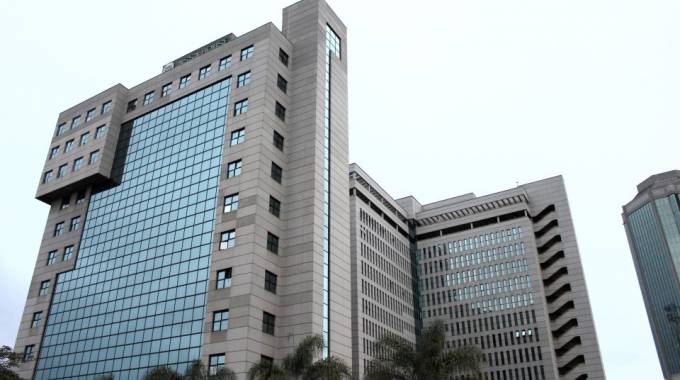
The Sunday Mail

Tawanda Musarurwa
Sometimes the most important things in life tend to be ordinary stuff.
Your house keys don’t seem remarkable until you have lost them and are locked out.
Breathing seems quite mundane so much that most times you don’t even realise that you are breathing.
But just ask a person who has had a bad case of Covid-19 and has been on a respirator, they will tell you how vital it is just to be able to breathe normally.
Quite unremarkable too are occupational safety and health (OHS) issues, until one loses an arm and a leg — literally and figuratively.
According to National Social Security Authority (NSSA) figures, there were 4 574 injuries and 47 fatalities in workplaces last year, which is a huge figure, but could still be understated considering that the Authority only accounts for formal sector employment (also excluding public service employees).
Zimbabwe National Statistics Agency places the number of injured workers in 2019 at 133 000.
That is why prevention is key and is vital to NSSA’s Vision Zero Strategy.
Workplaces can be some of the most dangerous places to be.
Almost 80 percent of all International Labour Organisation (ILO) standards and instruments are either wholly or partly to do with issues around OHS.
In his book, “Fundamental Principles of Occupational Health and Safety”, co-ordinator for technical co-operation and advisory services of the ILO’s social protection department, Benjamin Alli, describes OHS as “the science of the anticipation, recognition, evaluation and control of hazards arising in or from the workplace that could impair the health and well-being of workers, taking into account the possible impact on the surrounding communities and the general environment.”
In Zimbabwe, the OHS charge is led by the NSSA through the Accident Prevention and Workers Compensation Scheme (APWCS), which offers short-term and long-term benefits.
Is it really possible to assign an amount to compensate for pain and suffering?
The short answer to the question is no!
Accordingly, the APWCS fund is structured with the express purpose of preventing injuries at workplaces.
“Thirty percent of the premiums paid into the scheme are used for the direct claim costs. This includes pensions for workers with permanent disabilities, pensions for survivors, funeral grants, lump sum payments for disabilities, periodic payments for loss of earnings, medical aid and rehabilitation services,” said NSSA marketing and communications executive Mr Tendai Mutseyekwa.
“The rest of the money is used for prevention initiatives, which include the Occupational Safety and Health (OSH) inspectorate, promotion and health services.
“The scheme has reserves for future liabilities related to the injuries. The fund also covers costs associated with running the NSSA Workers Compensation and Rehabilitation Centre in Bulawayo.”
NSSA’s accident prevention initiatives (which seem quite ordinary, but
nonetheless essential) include safety inspections that are carried out in different workplaces in order to identify hazards which cause accidents in workplaces.
The Authority offers a number of training programmes to industry on how to prevent accidents in the workplace.
These programmes are tailor-made to meet the needs of different clients.
They are offered both to workers and management on different occupational safety issues.
And through the Occupational Safety and Health Managemeaznt System, NSSA assists industry to identify, develop
and implement effective occupational, safety and health management systems to prevent occupational disabling injuries.
The pandemic, which is still without an effective vaccine or treatment, has added to the dynamics of OHS.
In the local context, NSSA has moved to issue guidance on how workplaces can better prevent exposure to the highly infectious virus.
“We empower organisations to self-regulate themselves rather than waiting for the regulatory authority to enforce,” said Mr Mutseyekwa.
Sometimes social and monetary incentives work better.
In this regard, the Authority holds annual Safety and Health Awards, where organisations are awarded for good safety performance.
However, time and again bad things do happen despite everyone’s best efforts, and in such cases compensation comes into play.
Although valuation is largely subjective, especially when it comes to an issue that is as complex as pain and suffering, a general rule of thumb with regards to an award of compensation is to put the injured person back into the financial position prior the accident.
NSSA, however, has introduced a housing project, which has seen the construction of customised houses for grossly injured workers.
“Project Dzimba/Izindlo, which started off as a pilot project in 2018, was funded from the APWCS and to date a total of
96 pensioners drawn from across the country have benefited,” said Mr Mutseyekwa.
Following the success of the pilot project, provision of suitable housing to grossly disabled pensioners under APWCS was added as a benefit through Statutory Instrument 109 of 2020.
“As a result, NSSA shall be constructing more houses under this scheme, as and when the need arises.”
In broad terms, the opposite of suffering is happiness or pleasure; and there are a few things that are guaranteed to put a smile on a person’s face . . . home ownership is one of them.”



